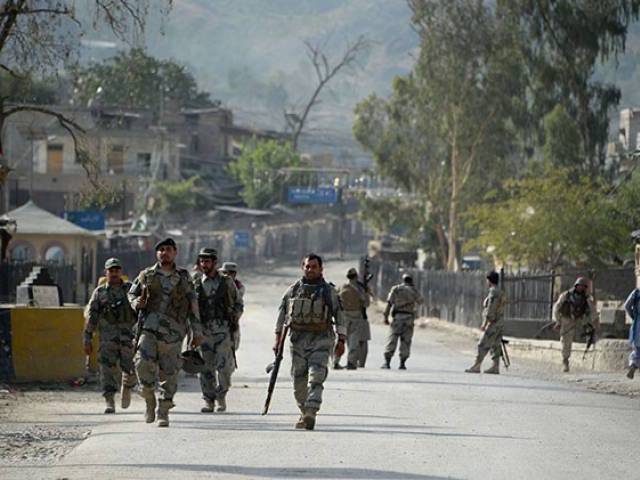
The Pak-Afghan conflict
Historically, Afghanistan is known to have existed as a mere geographical region than a nation-state until 1919 when Amir Amanullah could finally get a fairly satisfactory agreement with the British. Bloody conflicts were common in the region for centuries, as the Afghan leader decided to carve his country’s northern border. He first negotiated with the Khan of Ferghana Valley, located in today’s Uzbekistan, but later had to deal with the Soviet Red Army present in the valley. Abandoning his plans for Islamic central Asia, Amanullah struck a peace deal with the Bolsheviks in 1923. The year marked the opening of Russian and then British embassies in Afghanistan, followed by the rest.
The king, with ambitions to reform the tribal jigsaw, faced stiff resistance from other smaller but significant political powerhouses. On the other hand, with the British help, Kabul experienced a bandit as its ruler in 1929, who the Soviets saw as a British puppet. Mohammed Nadir Shah took over the country the same year but only to rule for five years before being assassinated. His reign was relatively of internal stability, although he annexed and integrated Herat in Afghanistan.
1,100km trench built alongside Pak-Afghan border in Balochistan
Meanwhile, Peshawar served as a key British cantonment dealing with Afghan affairs, diplomatically and militarily. None of the Amirs wanted to establish a well-trained, formal military mainly for internal political reasons until the Turks sent mission arrived in 1937 and formed command structure, regional commands and brigade, etcetera. Though it joined the United Nations (UN), it retained its isolationist posture.
However, in 1947, the region’s most primitive country had a rude awakening. The British had to leave Hindustan, creating Pakistan and India. Afghanistan not only refused to accept Pakistan as a sovereign country but also tried to block its entry in UN. Kabul, on the other hand, claimed the entire North Western Frontier Province (now Khyber-Pakhtunkhwa), Balochistan and some parts of Punjab. It also refused to accept the status of Durand Line agreement signed to formalise Afghanistan’s frontier with the British-ruled Hindustan.
On July 26, 1949, Kabul formally termed the Durand Line as an imaginary line, revoking all previous agreements unilaterally. The world had moved on from the 18th century and the claims largely went un-noticed. In practice too, Afghanistan did not violate the Durand Line, respecting its existence while issuing visa and in matters of taxes, trade and transit. But during this period, the Soviet-backed Pashtun nationalist movement never abandoned Afghan’s denial of Pakistan’s legitimacy on its vast expenses. Moreover, India supported Afghanistan and maintained ties with nationalist movement. Globally, however, the legal wizard insisted Kabul could not unilaterally change its borders with its post-colonial neighbour.
Border aggression: People protest against Afghan govt
Afghan’s fantasies nonetheless, in its internal matters, remained far from being resolved. While the Soviets maintained enormous influence on its military, Kabul was never written off by the western powers.
In the early 1970, Balochistan suffered a rebellion followed by annexation of power by the Communists in Afghanistan. Islamabad formally alleged its western neighbour of instigating and executing the Baloch uprising, which it had quashed with the help of Pakistan’s great friend the Shah of Iran. As a result, Kabul suffered severed diplomatic relations with Pakistan in 1973, which were only restored four years later when Prime Minister Zulfiqar Ali Bhutto released Ghaffar Khan of Pashtunistan movement.
But General Zia was not a fan of left-leaning Mohammed Daoud regime in Afghanistan, thus bitterness persisted. The Afghan leader fell out of favour with his Soviet master, resulting in the return of the country’s signature anarchy. On December 27, 1979, the USSR troops entered Afghanistan to change the country forever in the years to follow.
Pakistan, Afghanistan agree to create mechanism to resolve border issues
A lack of goodwill
The history neither began with the Soviet invasion nor Pakistan’s babysitting of Taliban. Oversimplification that marred understanding of the bilateral ties has not only misled Pakistanis and Afghans but also western capitals. The two nations did not enjoy any brotherhood. There was a lack of trust and multi-layered animosity, with seeds in the creation of Pakistan.
Today’s Afghan government, which can hardly establish its writ over Kabul’s secure zone has been hell-bent in denying Islamabad the right for managing border traffic of people and goods. The mind-set of 1940s has not faded away. The hallucinated self-image of a regional power still exists, while the game has moved on from horse, rifles and daggers to power manifestation tools far more sophisticated and far-reaching.
While the controversial concept of strategic depth was laid to rest in 1984, when Pakistan acquired nuclear deterrence, a similar reality check about Afghan’s Durand Line fantasies has not been realised yet. Kabul has also denied opening talks at the foreign minister or advisor to National Security levels, on the lack of a leader in its National Unity Government. Moreover, Abdullah Abdullah lives in the past while President Ghani has other more important issues to weigh in for. Panama Papers-tainted Nawaz Sharif has also long maintained an eerily silence on the national security matters. But if the issues are left for the regional military command to deal with, the conflict may have an explosive risk of igniting a limited war on the Pak-Afghan border.
Naveed Ahmad is a Pakistani investigative journalist and academic with extensive reporting experience in the Middle East and North Africa. He is based in Doha and Istanbul. He tweets @naveed360.











































COMMENTS (9)
Comments are moderated and generally will be posted if they are on-topic and not abusive.
For more information, please see our Comments FAQ